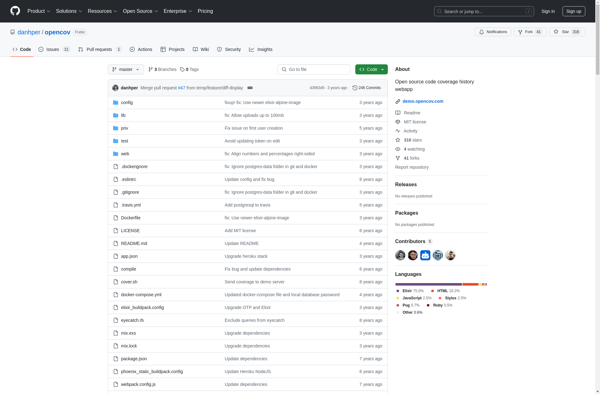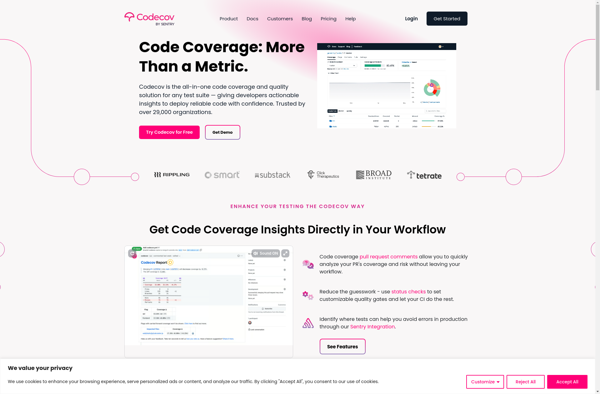Coveralls

Coveralls: Measure Code Coverage for Multiple Programming Languages
An open source tool for measuring code coverage in Ruby, JavaScript, Python, PHP, C, Objective-C, Java, and Go projects, integrating with popular CI tools.
What is Coveralls?
Coveralls is an open source tool used to measure code coverage in software development projects. It integrates seamlessly with continuous integration services like Travis CI, CircleCI, Codeship, GitLab CI, and more to provide code coverage statistics and insights.
After integrating Coveralls with your GitHub repository, it will analyze your test suite coverage on every commit and display an overview coverage percentage and stats right in the GitHub UI. This makes it easy to track code coverage over time and ensure all code is sufficiently tested.
Coveralls supports Ruby, JavaScript, Python, PHP, C, Objective-C, Java, Go, and more programming languages. It uses coverage measurement tools like SimpleCov (Ruby), PHPUnit (PHP), or gocov (Go) behind the scenes to generate coverage data, then aggregates and displays it all in one place.
Some key features and benefits of Coveralls include:
- Displaying code coverage stats and history right in GitHub UI
- Support for all major CI/CD platforms for automation
- Breakdowns of coverage by file/lines of code
- Coverage notifications through webhooks and Github statuses
- Identification of decrease in coverage from pull requests
- Customizable coverage thresholds
- Badges to display coverage percentages
- Open source and free for public repositories
Overall, Coveralls brings standardized code coverage metrics directly into developer workflows. This increases visibility into testing thoroughness and quality for engineering teams.
Coveralls Features
Features
- Shows code coverage percentages and stats in GitHub UI
- Integrates with Travis CI, CircleCI, Codeship, GitLab CI and more
- Measures code coverage for Ruby, JavaScript, Python, PHP, C, Objective-C, Java, and Go projects
- Open source tool for tracking code coverage over time
Pricing
- Free
- Open Source
Pros
Cons
Official Links
Reviews & Ratings
Login to ReviewThe Best Coveralls Alternatives
Top Development and Code Coverage and other similar apps like Coveralls
OpenCov

Codecov
